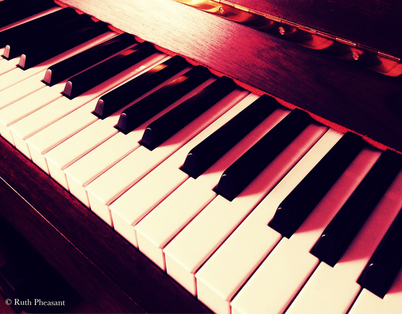
Learning piano technique involves acquiring specific skills and applying them to appropriate passages of music.
Piano technique is about moving the fingers in certain ways according to what the music requires.
Some examples: Chords which require the ability to control the fingers so that they depress all the keys at the same time giving a clean, neat sound; spread chords which require coordination and dexterity so as to give the impression of a strummed guitar or harp; jumps of great distances or repeated interval patterns which require good spacial awareness and memory of the keyboard; large stretches which require flexibility acquired through consistent practice; fast passages which require dexterity, control, coordination and agility.
With enough practice and repetition the skills become assigned to muscle memory. The movement becomes automatic and is naturally used when encountering a passage of music with similar movement patterns.
Good technique allows you to control the sound you make and helps prevent injury such as repetitive strain injury - bad form can cause unnecessary strain. Learning technical skills can help you to develop good habits with form. Specific technical exercises can help you to learn the correct form for a particular skill.
The practice of technical exercises such as scales, arpeggios and broken chords is a common and effective way to develop technique because these are patterns that are commonly found in music. Studies - pieces of music formed from technical exercises - are also helpful and can give a clearer idea of how these sorts of patterns are incorporated into music. Studies can also make the practice of technical exercises more enjoyable due to their more tuneful and rhythmic nature.
Technical exercises can also be created to help with a specific technical difficulty and can be based on a passage of music that presents such a difficulty.
For all these reasons, it is worthwhile spending at least a small part of each practice session focusing on technique.
Read about how classical training can develop your technique.
Articles main menu
Piano technique is about moving the fingers in certain ways according to what the music requires.
Some examples: Chords which require the ability to control the fingers so that they depress all the keys at the same time giving a clean, neat sound; spread chords which require coordination and dexterity so as to give the impression of a strummed guitar or harp; jumps of great distances or repeated interval patterns which require good spacial awareness and memory of the keyboard; large stretches which require flexibility acquired through consistent practice; fast passages which require dexterity, control, coordination and agility.
With enough practice and repetition the skills become assigned to muscle memory. The movement becomes automatic and is naturally used when encountering a passage of music with similar movement patterns.
Good technique allows you to control the sound you make and helps prevent injury such as repetitive strain injury - bad form can cause unnecessary strain. Learning technical skills can help you to develop good habits with form. Specific technical exercises can help you to learn the correct form for a particular skill.
The practice of technical exercises such as scales, arpeggios and broken chords is a common and effective way to develop technique because these are patterns that are commonly found in music. Studies - pieces of music formed from technical exercises - are also helpful and can give a clearer idea of how these sorts of patterns are incorporated into music. Studies can also make the practice of technical exercises more enjoyable due to their more tuneful and rhythmic nature.
Technical exercises can also be created to help with a specific technical difficulty and can be based on a passage of music that presents such a difficulty.
For all these reasons, it is worthwhile spending at least a small part of each practice session focusing on technique.
Read about how classical training can develop your technique.
Articles main menu